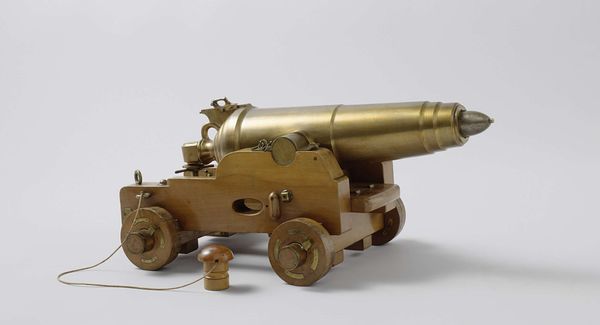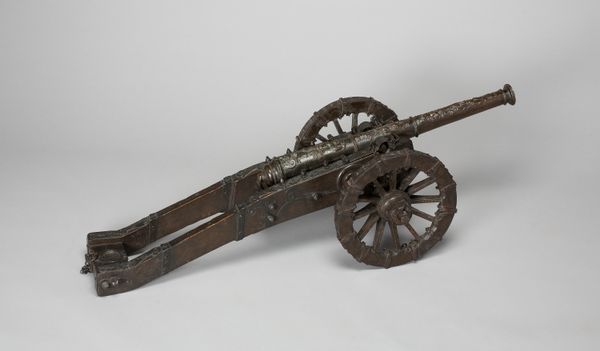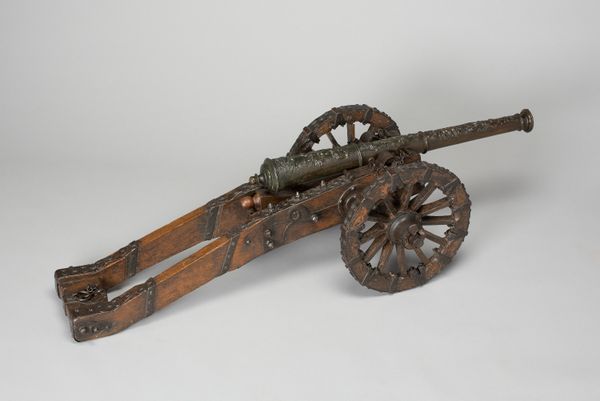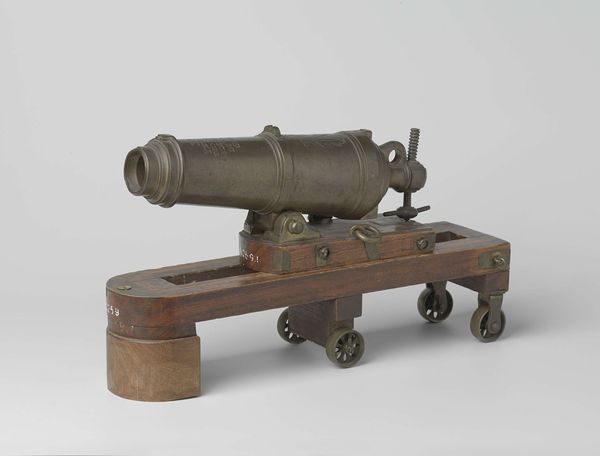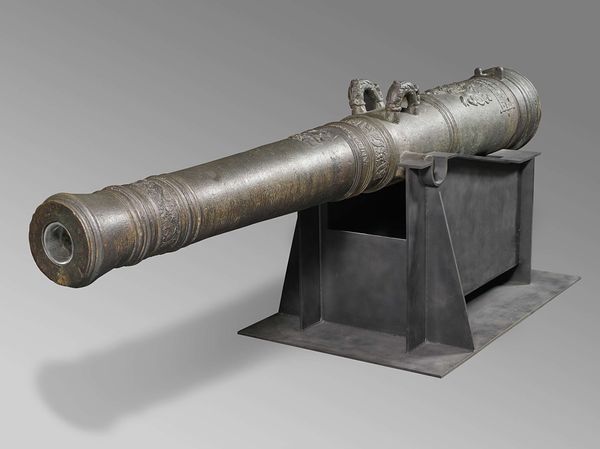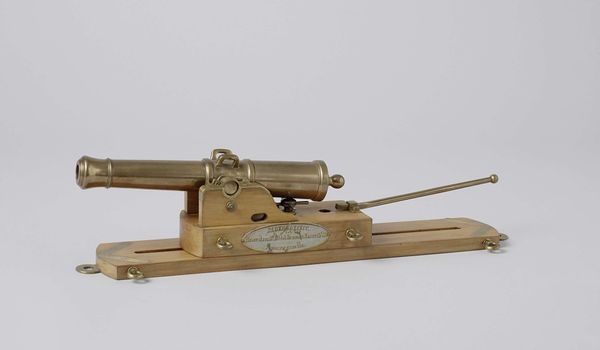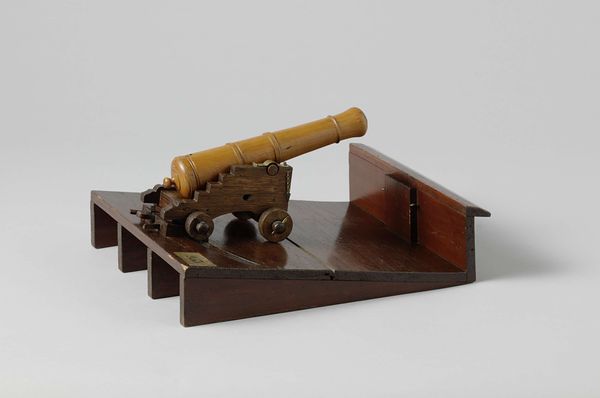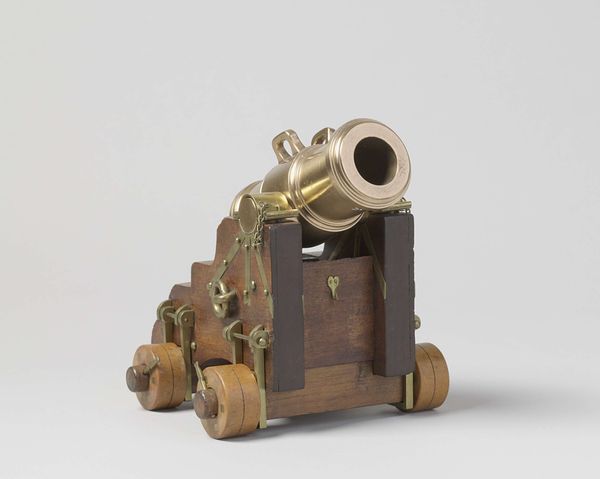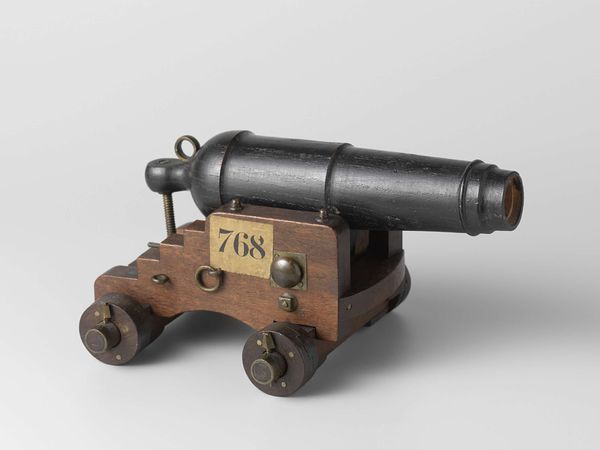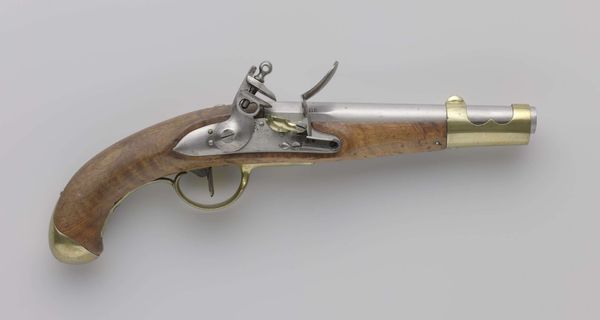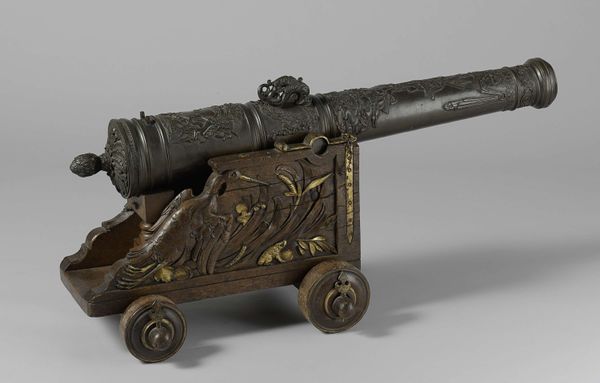
metal, bronze, sculpture, wood
#
metal
#
bronze
#
geometric
#
sculpture
#
wood
#
history-painting
#
academic-art
#
miniature
#
realism
Dimensions: height 28 cm, width 63.5 cm, depth 23.5 cm, height 8.5 cm, width 72.5 cm, depth 50.5 cm
Copyright: Rijks Museum: Open Domain
Editor: We are looking at the "Model of a 30-Pounder Gun and Carriage," from 1854, fabricated in metal, bronze, and wood. I'm struck by the contrast of the dark metallic gun against the lighter wood of the carriage, and, despite its miniature size, its apparent weightiness. What can you tell me about this piece? Curator: This model presents a fascinating study in materiality and production. The choice of bronze and metal speaks directly to the original function and inherent power associated with artillery at the time. This isn't merely decorative; it's a representation deeply embedded in 19th-century industrial processes and the social structures that enabled warfare. Editor: So you're saying that the materials themselves are significant in understanding the piece? Curator: Absolutely. Consider the labour involved: from the extraction of raw materials, to the forging of the metal, and the crafting of the wooden carriage. Each stage reveals insights into the economics of the era and the position of craft and industry within the societal framework of war. The very creation of a miniature—a luxury object—diverts from the brute realities of industrialized conflict but relies on those exact networks. How does focusing on these means and methods change your view? Editor: I see your point. I had initially focused on the aesthetic contrast, but thinking about the labor and industrial systems involved gives it a much darker, more complex meaning. It moves from being a representation of power to being about the systems of production that make that power possible. Curator: Precisely. And questioning who benefits from these processes remains essential to any comprehensive interpretation. Editor: That makes me look at the piece in a totally new way. I hadn't considered the implications of labor involved in creating both the real object, and its miniature representation. Curator: That’s what makes a materialist approach so powerful. By focusing on the physical means of creation, we expose the socio-economic dynamics that shape not just the art object, but the world around it.
Comments
No comments
Be the first to comment and join the conversation on the ultimate creative platform.
